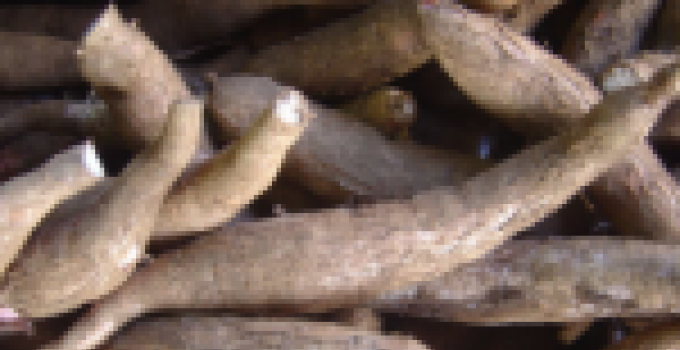Ghana produces about 16 million metric tonnes of cassava of which an estimate of about 11 million tonnes is available for human consumption.
However, only four million tonnes of the cassava available for human consumption is consumed leaving over seven million tonnes as surplus.
The Statistics, Research and Information Directorate (SRID) of the Ministry of Food and Agriculture 2013-2014 report said Cassava has traditionally been consumed in the form of fresh cassava roots and processed products such as Gari, Kokonte, Agbelema amongst others.
However, over the last five years, there has been a steady growth in demand for commercial and industrial use of new value added cassava products, notably High Quality Cassava Flour, Industrial Grade Cassava Flour, High Quality Cassava Chips, Starch and Wet Cake.
Incomes from cassava production and post-harvest processing of cassava represent around one fifth (22 percent) of Ghana’s agricultural GDP.
Majority of people employed in the agricultural sector in Ghana engage in cassava production or intercrop with cassava. This contributes significantly to increasing income and livelihoods for the rural communities as it serves as the basis for development of small industries providing jobs and wealth in the rural communities.
Present phenomena of industrialization and commercialization of the value chain has created an additional opportunity for upstream and downstream chain actors to leverage for increased income and prosperity.
This is driven by what can be termed as ‘the new industries for cassava prominence’, processing and drying technologies.
Cassava was chosen because it performs different roles for different people in Ghana, and there has been a significant global market for dehydrated cassava that is boosting production with new market opportunities.
It serves as a reserve crop, rural staple food and convenient food for urban dwellers, industrial raw material, cash crop, and foreign exchange earner.
According to the Food Research Institute (FRI) of the Council for Scientific and Industrial Research (CSIR), the short shelf-life of cassava requires efficient marketing, fresh consumption or processing.
As a result, a cassava stakeholder platform has been formed to help promote competitive production and processing of cassava into industrial raw materials for import substitution and foreign exchange earnings and also to spur industrialization.
Research by public research institutions such as CSIR and the Universities had resulted in high yielding varieties raising production from 10 to 20 or more tonnes per hectare.
It has also resulted in new varieties with higher starch content; some more than twice, from 14 percent to 30 percent, and New Value Added Products through the use of new technology including Ethanol from cassava to substitute some of the sixty million litres Ghana imports per annum, Starch for the pharmaceutical industry, High Quality Cassava Flour/ starch for breweries, Composite flour for bakery, bread making and biscuit industries.
It has also resulted in Industrial Grade Cassava Flour as a glue extender in the plywood industries and paperboard, High Quality Cassava Chips/Grits for animal feed/ poultry Feed, Starch-for ethanol, Textile and pharmaceutical industries, as well as Wet Cake-for the brewery and staples.
The FRI said in view of the perishable nature of cassava and the poor rural road infrastructure primary processing can be done in rural areas into high quality cassava chips or flour, creating jobs for rural youth and enhancing farmer incomes as well as transforming “Waste” (peels) into animal feed or biogas for domestic or industrial use.
The Ghana Industrial Cassava Stakeholders Platform therefore provides an opportunity for accomplishing objectives.
The platform was officially launched on 15th December, 2015 as a mouthpiece and working group to accelerate the development of the commercial cassava value chain.
To achieve this, efforts to increase cassava production are being made concurrently with increasing value addition, market diversification; trade in high-value and shelf-stable cassava products.

